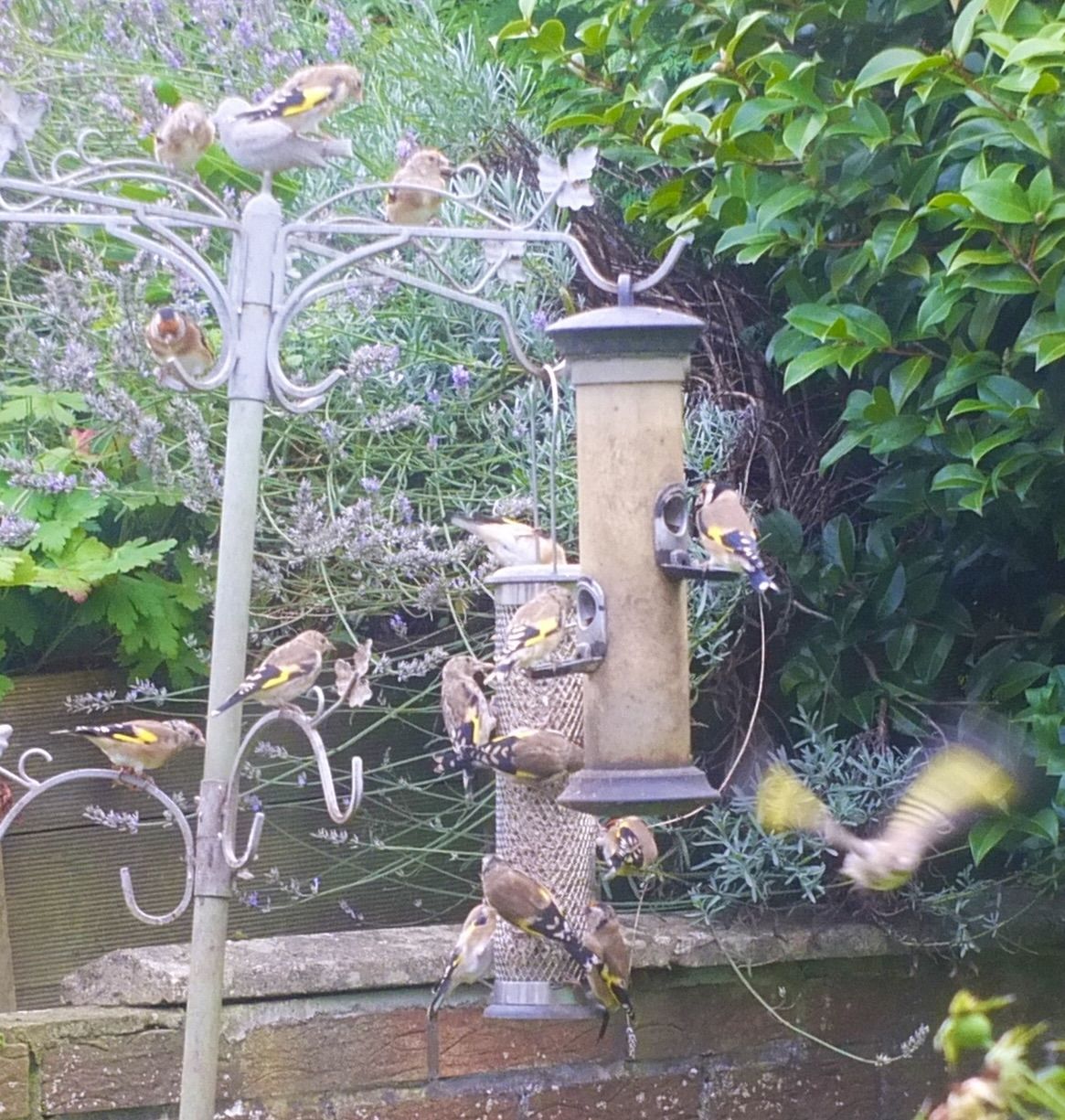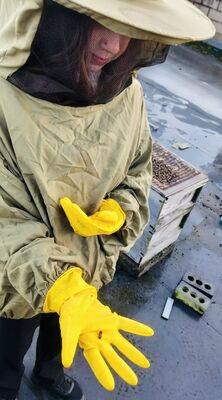READER John Martin is wondering where all his pigeons have gone – but he’s still glad they’ve been replaced by a family of goldfinches.
John is the latest person to be converted to the power of sunflower hearts. These are the kernels of sunflower seeds which are usually hidden behind the hardest of husks that only birds with powerful beaks like bullfinches can break through – and even then it might take a minute or two of hard work.
You don’t see those black and white seeds for sale anywhere nowadays, although you still find them in fancy salads – because the factories have done the birds’ work for them.
When de-husked, they become the ultimate bird food, packed with protein with the largest calorie-to-weight ratio of them all. And birds can just gobble them up with little energy wasted.
But they’re not cheap. 70 per cent of our sunflower hearts are grown in Ukraine, and the war there has pushed up prices. You can get a sack of them in a pet shop, although Dúlra likes to go to the birdseed specialist, Hugh Gilmore’s Temple Garden and Farm shop near Carryduff. A smaller bag there is £13 and the massive one is £30. You’d easy fill a feeder a hundred times over from that bag – and with 98 days to Christmas, that £30 monster bag should see you to the New Year.
John loves to feed the birds in his Beechmount home because, just like Dúlra, he spent his youth on the Black Mountain and has been devoted to nature ever since. He buys seeds and puts them out every day, but the seeds that you buy in most pet stores and supermarkets are bulked up with larger grain rather than the more expensive small seeds, and that grain attracts pigeons. And so before long, John had a flock of 60 feeding in his garden!
He contacted Dúlra asking if he knew why they had suddenly disappeared – and Dúlra has the answer: sunflower hearts. John recently started putting the super-food into hanging feeders and the pigeons took off, to be replaced by four beautiful goldfinches.
John loves his goldfinches – who doesn’t? – but he still misses the pigeons and wonders if they are surviving without him. “I wouldn’t see anything go hungry – even a pigeon and even a cat,” says John. He’s got a bigger heart than Dúlra!
The birds in this picture were feeding this week on Dúlra’s two feeders packed with sunflower hearts. It’s a privilege to be able to admire so many goldfinches – lasair coille or flame of the wood in Irish – outside your kitchen window. Dúlra could spend a whole morning watching them – and often does!
How many goldfinches can you see in this picture? Dúlra can count 16, most of them juveniles along with a couple of adults with their bright red heads. And as the weather cools and the days shorten, that number will only increase. And all thanks to some bright spark deciding to take the husks off sunflower seeds!
• It’s amazing to see house martins still flying in our skies. On Tuesday a flock surrounded Dúlra’s home, attracted by the caller blasting out their twittering song. Last month Dúlra removed the swift calls when their 100 days ended but house martins and swallows stick it out here for a month longer no matter how bad the weather gets.
It’s incredible that they’ve been able to find any insects to feed on over the last few weeks in the cooler and wetter conditions. But they refuse to head south just yet – maybe they are waiting on the young birds building up their flying strength for the long journey to Africa.
The house martins clearly saw the plastic nests that Dúlra put up for them – going close to them for a look before darting back up to the sky. But, just like the swifts, they still aren’t ready to take the bait. Still, when next spring comes, he's hoping one of these birds will return and settle down in the ready-made home. And make Dúlra's year at the same time.
• If you’ve seen or photographed anything interesting or have any nature questions, you can text Dúlra on 07801 414804.







